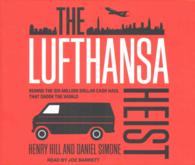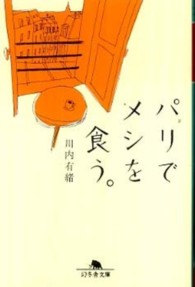Full Description
This volume consists of a collection of studies which are based on papers presented at the symposium «Erlöst leben - oder sterben, um befreit zu werden?» (Zurich, May 2008), organized in honour of Peter Schreiner. It offers a selective overview of individual liberation as dealt with in Indian texts and rituals at different times. Starting from the two prominent approaches to this problem, namely, that of jīvanmukti ('liberation in one's lifetime') and that of videhamukti ('liberation beyond the body'), some important questions have to be considered: How has life been thought compatible with mokṣa? How have 'life' in the concept of the 'liberated living' and 'death' in the concept of the 'disembodied liberated' been conceived by philosophers, poets, religious thinkers, ritual practitioners and social activists?
Coming from various disciplinary backgrounds - Indology, Religious Studies, Social Anthropology - the contributors explore these questions in the context of their particular fields of research. Through this multi-faceted approach, the volume presents an original and substantial analysis of an intriguing topic touching on many aspects of religious and secular life. The careful interpretation of the sources by a group of internationally renowned scholars leads to critical perspectives on some crucial developments in the history of Indian religion.
Contents
Contents: Greg Bailey: Does Bhartṛhari Accept the Possibility of Liberation lebend oder sterbend? - John Brockington: sūrya ivāparaḥ: Exemplary Deaths in the Mahābhārata - Mary Brockington: Release through Death in Vālmīki's Narrative - Maya Burger: Getting out - Letting in: bhakti Models of Liberation - James L. Fitzgerald: The Ethical Significance of Living by Gleaning (uñchavṛtti) in the Mahābhārata - Mislav Ježić: To Be Liberated while Still Alive or to Die in Order to Be Liberated - in the Jñāna, Karma and Bhakti Yoga of the Bhagavadgītā - According to Different Text Layers - Dorothea Lüddeckens: «One happy family»: Gemeinschaft über den Tod hinaus. Zu den Todesritualen der Parsen Mumbais - Angelika Malinar: Something Like Liberation: prakṛtilaya (Absorption in in the Cause/s of Creation) in Yoga and Sāṃkhya - Nicola Pozza: Jīvanmukti in Modern India: A Reassessment of Its Postulated Precedence over videhamokṣa - Shalini Randeria: «We Are in the World in Order to Exchange»: Mortuary Exchange and Memorialization Feasts among Dalits in Gujarat (Western India) - Peter Schreiner: How to Come out of Samādhi? - Olga Serbaeva Saraogi: Liberation in Life and after Death in Early Śaiva Mantramārgic Texts: The Problem of Jīvanmukti - Renate Söhnen-Thieme: Sterben und Erlösung in den Upaniṣads und im Bhāgavatapurāṇa - Christoph Uehlinger: «Erlöst leben - oder sterben, um befreit zu werden?» Religionswissenschaftliche Präliminarien und Spiegelungen - Heinz Werner Wessler: Sterben verhindern, um zu leben: Sozialutopie und persönliche Umkehr im Roman «Die Hütte» von Jay Prakāś Kardam - David Gordon White: Utkrānti: From Epic Warrior's Apotheosis to Tantric Yogi's Suicide - Caroline Widmer: «...und dann wurde er einer der Arahants...» - Erzählungen über den Werdegang zu Lebzeiten Erlöster im Majjhimanikāya.







